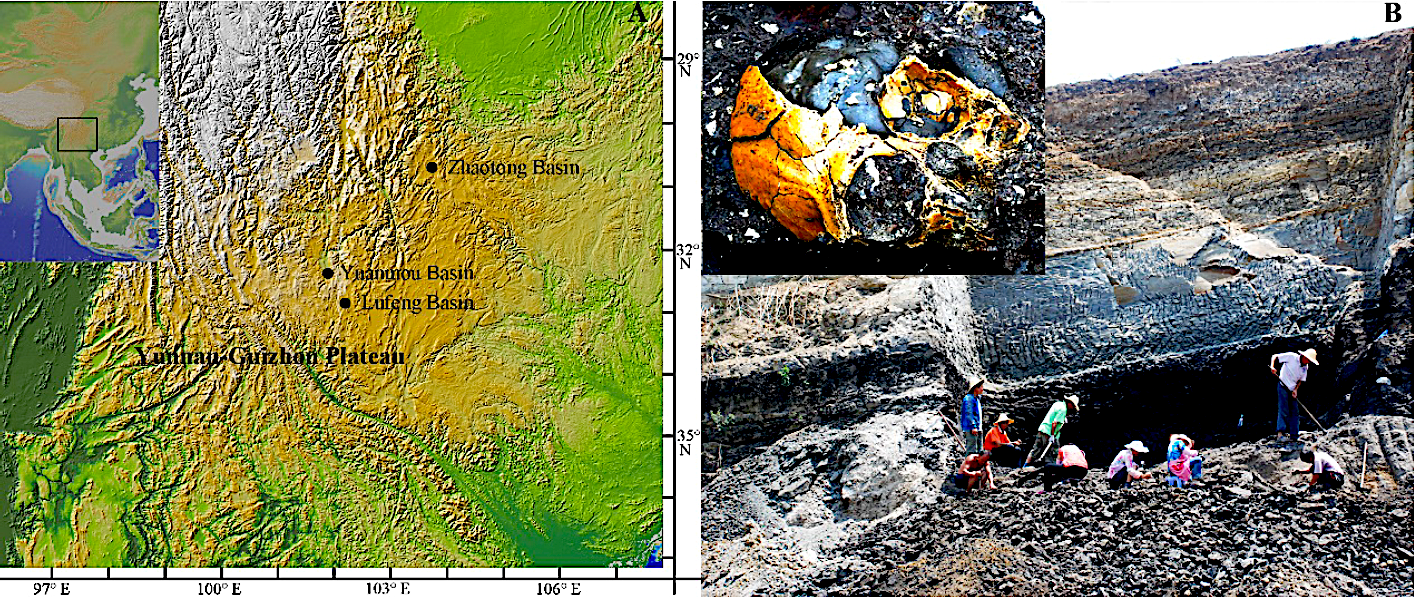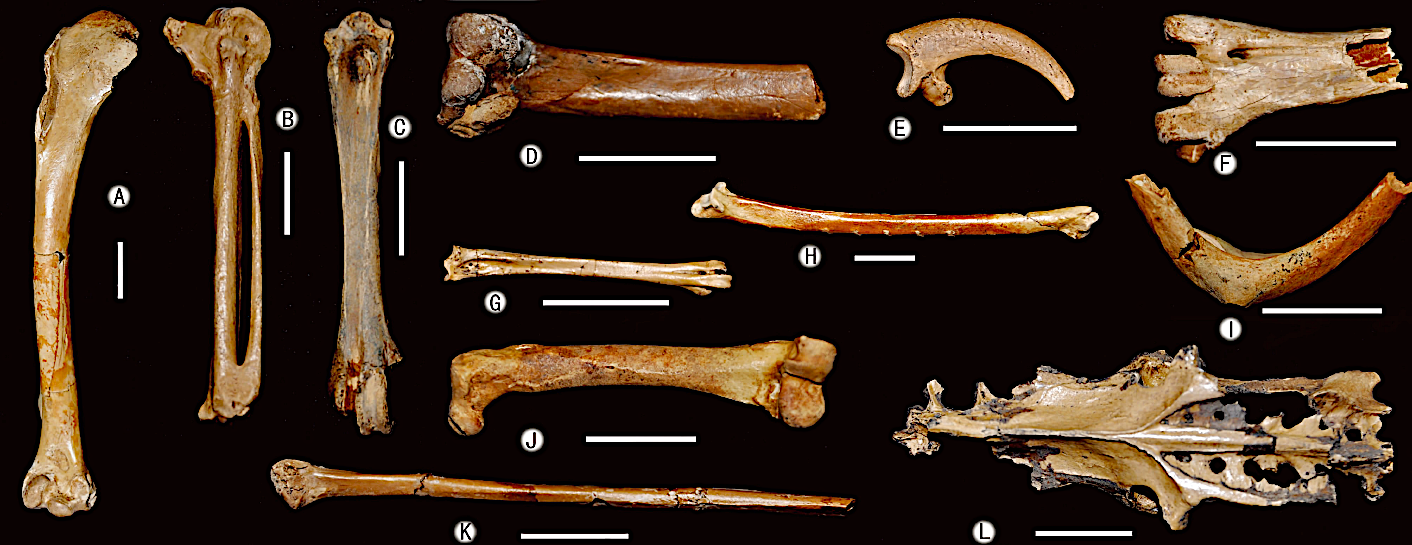Zhaotong Fm
Type Locality and Naming
The naming section is located at Shuitangba southwest of the seat of Zhaotong County (27.3°N, 103.7°N), Yunnan. Mentioned by Zhou (1962), and formally named by the Compilation Team of the “Regional Stratigraphic Tables of the Southwestern Region: Yunnan Volume” in 1978.
[Figure: Schematic map showing the principal late Miocene hominoid-bearing sites in Yunnan Province (A). Also shown in (B) is the Zhaotong Basin and its major fluvial system (the hominoid skull is by courtesy of Ji Xueping).
Lithology and Thickness
Primarily gray clay and lignite. According to the lithology and coal bed characteristics, the formation is divided into three members: Lower part is mainly clay with thin-bedded coal and carbonaceous clay, with conglomerate at the base. Middle part is mainly lignite and a few clay interbeds. Upper part is mainly clay and sandy clay, without coal bed. In Zhaotong and Dongchuan, it is 60-350 m thick. It is an important lignite horizon in Yunnan Province.
Relationships and Distribution
Lower contact
It is overlying on the Triassic.
Upper contact
It is unconformably overlain by the Quaternary early Pleistocene sandy conglomerate.
Regional extent
This formation is mainly distributed in the Zhaotong area, northeastern Yunnan, and also exposed in the Ludian, Yichang and Daguan areas, Yunnan.
GeoJSON
Fossils
The lignite beds contain abundant mammals, sporopollen and gastropods. Based on Chang et al. 2015, about 71 families and general of pollen were identified, most are angiosperms (68.3%), followed by gymnosperms (21.2%), and pteridophytes (10.5%); the dominant species are Quercus-evergreen (Quercus E) (31.2%) and Alnus (11.5%). Pollen of Quercus-deciduous (Quercus D), Poaceae Tsuga, Pinaceae Carya, Castanea/Castanopsis and Ulmus occurs frequently. Mammal fossils include Lufengpithecus lufengensis, Muntiacus zhaotongensis, Tapirus yunnanensis, Nesolagus longisinuosus, Sinocastor zhaotungensis, Stegolophodon zhaotungensis, Sinomastodon praeintermedius, Siamogale melilutra, Metacervulus sp., and Rhinocerotids sp. indet. Based on Zhang et al. 2013, the fossils of Aves are very maple, could be assigned to about 11 families. Other vertebral fossil includes Teleostei, Squamata, Testudines, Crocodylomorpha, and Anura.
[Figure: Birds fossils from the Zhaotong region, Yunnan Province (Zhang et al., 201)
Age
Depositional setting
This formation is a typical lacustrine sedimentary facies sequence, sedimentary subfaces in the Shuitangba section can be recognized, bottom upwards: swamp subface, shore lake subface, swamp subface, and shore/shallow lake subface.
Additional Information

